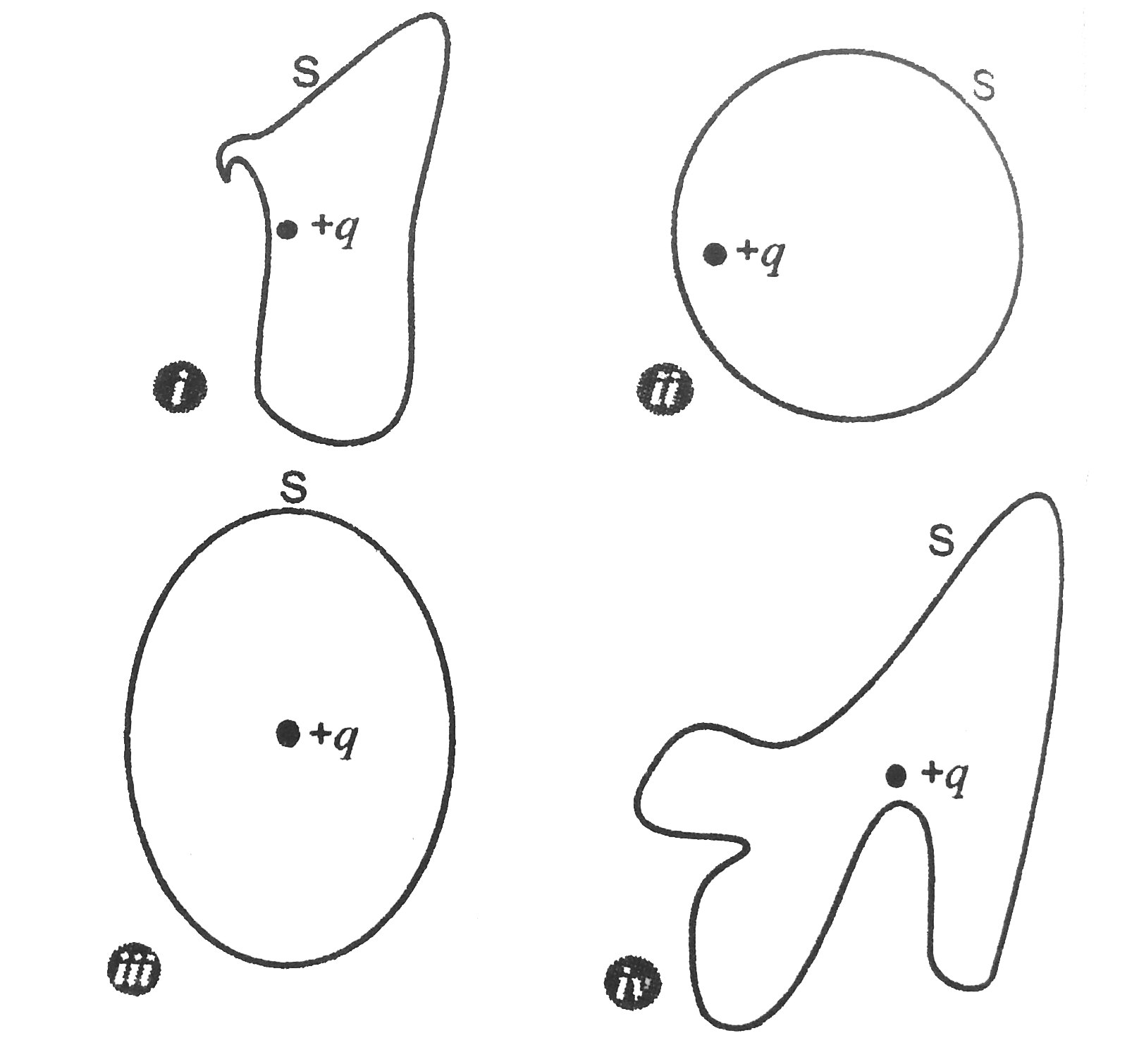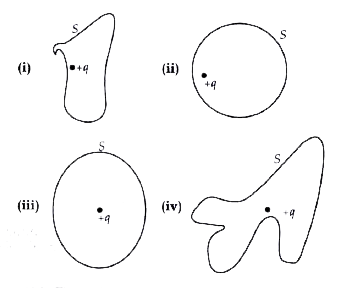A surface enclosed an electric dipole, the flux through the surface is -
In a dipole the net charge is zero. Since the net charge enclosed is zero, the total flux is zero for this surface. Note that, however, the electric field need not be zero on the surface.
Similar Questions
Knowledge Check
The electric flux through the surface
 Ain fig, (iv) is the largestBin fig, (iii) is the leastCin fig (ii) is same as a fig (iii) but is smaller than that in Fig (iv).Dis the same for all the figures.
Ain fig, (iv) is the largestBin fig, (iii) is the leastCin fig (ii) is same as a fig (iii) but is smaller than that in Fig (iv).Dis the same for all the figures.The electric flux through the surface
 Ain fig. (iv) is the largestBin fig. (iii) is the leastCin fig. (ii) is same as fig.(iii) but is smaller than fig.(iv)DIs the same for all the figures.
Ain fig. (iv) is the largestBin fig. (iii) is the leastCin fig. (ii) is same as fig.(iii) but is smaller than fig.(iv)DIs the same for all the figures.A cubical guassian surface encloses 24 C of charge. The electric flux through each surface of the cube is
A24ε0V−mB4ε0V−mC12ε0V−mD2.4ε0V−m
When a 10 μC charge is enclosed by a closed surface, the flux passing through the surface is ϕ. Now another 10 µC charge is placed inside the closed surface, then the flux passing through the surface is ______.
View SolutionA surface enclosed an electric dipole, the flux through the surface is -
View SolutionA plane surface of area 200cm2 is kept in a uniform electric field of intensity 200 N/C. if the angle between the normal to the surface and field is 60∘, the electric flux through the surface is
View SolutionAssertion: Electric flux represents the number of electric lines passing normally through the given surface in the electric field.
Reason: Electric flux through a surface is given as
ϕ=qε0
View SolutionA wire AB of length L has linear charge density λ=Kx, where x is measured from the end A of the wire. This wire is enclosed by a Gaussian hollow surface. Find the expression for electric flux through the surface.
View Solution


